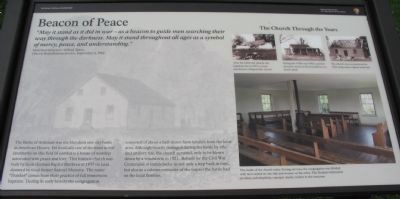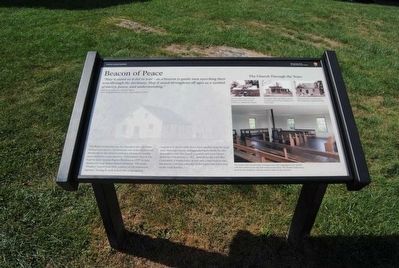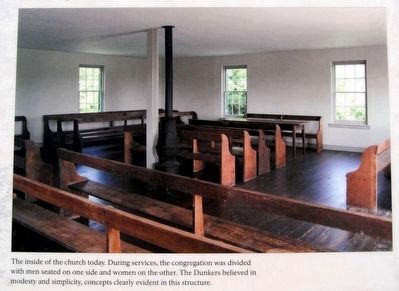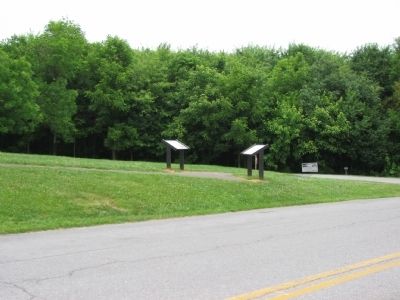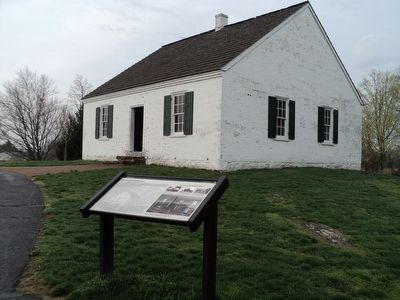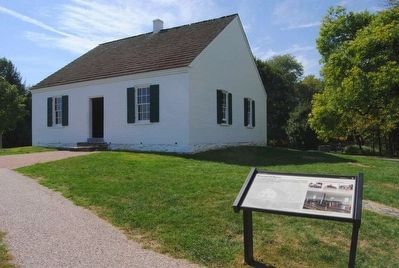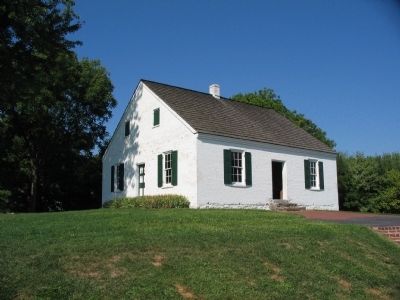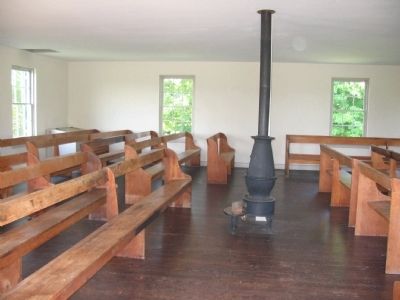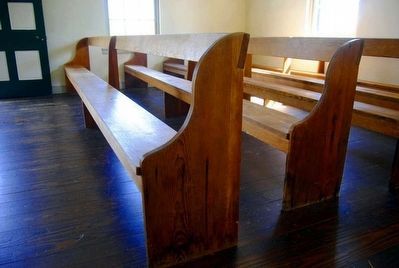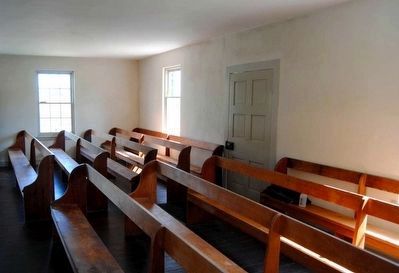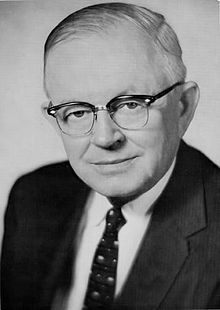Near Sharpsburg in Washington County, Maryland — The American Northeast (Mid-Atlantic)
Beacon of Peace
"May it stand as it did in war - as a beacon to guide men searching their way through the darkness. May it stand throughout all ages as a symbol of mercy, peace, and understanding."
Maryland Governor Millard Tawes
Church Rededication Service, September 2, 1962
The Battle of Antietam was the bloodiest one-day battle in American History. Yet ironically one of the most noted landmarks on this field of combat is a house of worship associated with peace and love. This historic church was built by local German Baptist Brethren in 1852 on land donated by local farmer Samuel Mumma. The name "Dunker" comes from their practice of full immersion baptism. During its early history the congregation consisted of about a half-dozen farm families from the local area. Although heavily damaged during the battle by rifle and artillery fire, the church survived, only to be blown down by a windstorm in 1921. Rebuilt for the Civil War Centennial, it stands today as not only a step back in time, but also as a solemn reminder of the impact the battle had on the local families.
Erected 2009 by Antietam National Battlefield - National Park Service - U.S. Department of the Interior.
Topics. This historical marker is listed in these topic lists: Churches & Religion • War, US Civil. A significant historical date for this entry is September 2, 1962.
Location. 39° 28.53′ N, 77° 44.803′ W. Marker is near Sharpsburg, Maryland, in Washington County. Marker is on Dunker Church Road / Old Hagerstown Pike near Smoketown Road, on the right when traveling south. Located at stop one of the driving tour of Antietam Battlefield. Touch for map. Marker is in this post office area: Sharpsburg MD 21782, United States of America. Touch for directions.
Other nearby markers. At least 10 other markers are within walking distance of this marker. Dunker Church - "Symbol of Peace and Brotherhood" (here, next to this marker); "Destroy the Rebel Army" (here, next to this marker); a different marker also named Destroy the Rebel Army (here, next to this marker); Jackson's Command (within shouting distance of this marker); Twelfth Army Corps (within shouting distance of this marker); Second Army Corps (within shouting distance of this marker); a different marker also named Twelfth Army Corps (within shouting distance of this marker); 5th, 7th and 66th Ohio Infantry Monument (within shouting distance of this marker); Greene's Division, Twelfth Army Corps (within shouting distance of this marker); Reserve Artillery, Longstreet's Command (within shouting distance of this marker). Touch for a list and map of all markers in Sharpsburg.
Related marker. Click here for another marker that is related to this marker. This marker replaced an older one at this location titled "Symbol of Peace and Brotherhood."
Also see . . .
1. Dunker Church. National Park Service page detailing the history of the church. (Submitted on July 6, 2009, by Craig Swain of Leesburg, Virginia.)
2. J. Millard Tawes. John Millard Tawes (April 8, 1894 – June 25, 1979), a member of the United States Democratic Party, was the 54th Governor of Maryland in the United States from 1959 to 1967. (Submitted on September 21, 2015, by Brian Scott of Anderson, South Carolina.)
3. German Baptist. The German Baptist movement was founded as a fusion of the Anabaptist and Radical Pietist movements. German Baptists are not to be confused with Primitive, Separate, Southern, Particular, and all other mainline Baptist denominations who, although generally unified on rudimentary doctrines such as baptism, would have conflicting views in other areas. (Submitted on September 21, 2015, by Brian Scott of Anderson, South Carolina.)
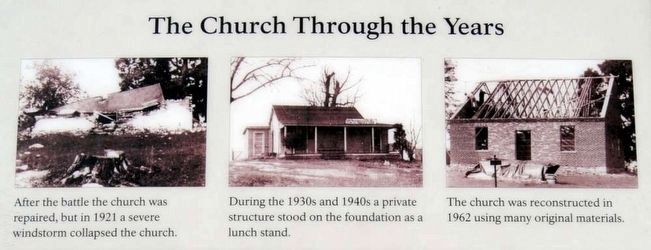
Photographed By Brian Scott, September 19, 2015
3. Beacon of Peace Marker
The Church Through the Ages
The Church Through the Ages
Left: After the battle the church was repaired, but in 1921 a severe windstorm collapsed the church.
Center: During the 1930s and 1940s a private structure stood on the foundation as a lunch stand.
Right: The church was reconstructed in 1962 using many original materials.
Credits. This page was last revised on April 1, 2022. It was originally submitted on July 6, 2009, by Craig Swain of Leesburg, Virginia. This page has been viewed 1,374 times since then and 22 times this year. Photos: 1. submitted on July 6, 2009, by Craig Swain of Leesburg, Virginia. 2, 3, 4. submitted on September 21, 2015, by Brian Scott of Anderson, South Carolina. 5. submitted on July 6, 2009, by Craig Swain of Leesburg, Virginia. 6. submitted on April 15, 2011, by Bill Coughlin of Woodland Park, New Jersey. 7. submitted on September 21, 2015, by Brian Scott of Anderson, South Carolina. 8, 9. submitted on March 16, 2008, by Craig Swain of Leesburg, Virginia. 10, 11, 12. submitted on September 21, 2015, by Brian Scott of Anderson, South Carolina.
